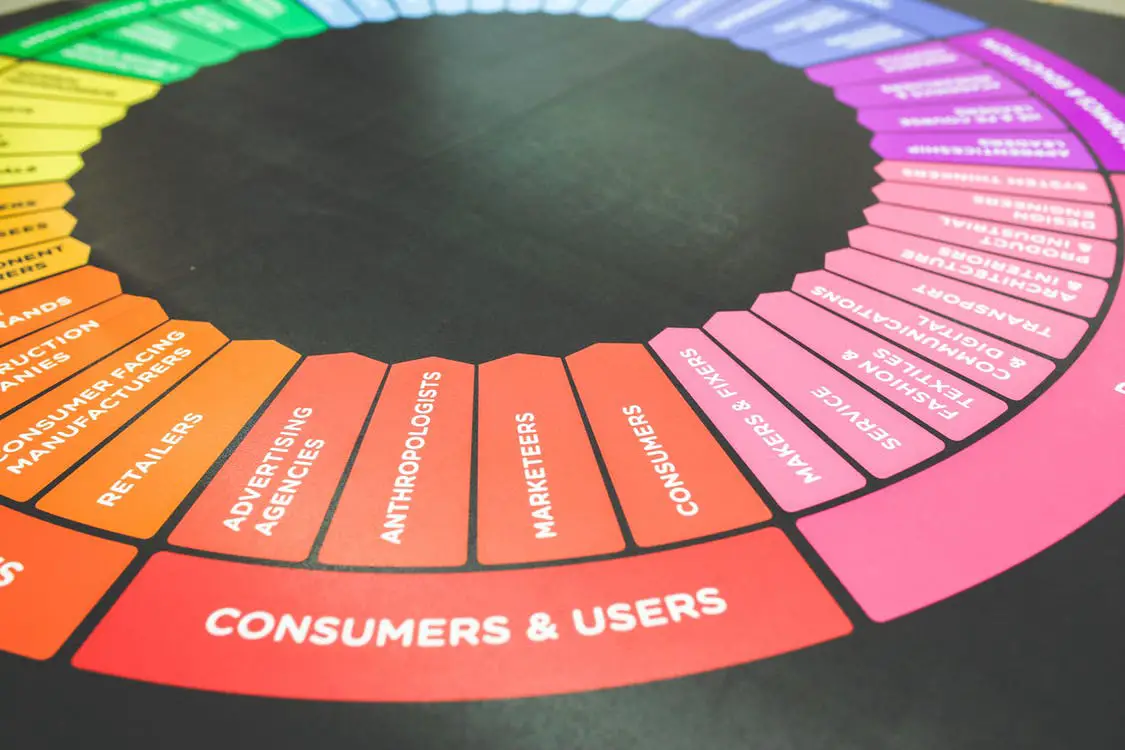![How To Deal With Sensory Overload [9 Tips For Overstimulation]](https://happyrubin.com/wp-content/uploads/2019/12/ik-ben-overprikkeld-150x150.jpg)
Positive Intention: Explained (& Fundamental Needs) [Powerful!]
![Positive Intention: Explained (& Fundamental Needs) [Powerful!]](https://happyrubin.com/wp-content/uploads/2018/01/fundamentele-behoeften-positieve-intentie1.jpeg)
When there is a problem, it is very useful to look at positive intent and the fundamental needs behind the problem. In this article you will learn all about the positive intention and the fundamental needs. This will help you tackle problems at the root, so read on to learn all about it!
Sources: Marcel Meijlink, UNLP
Contents of this page:
Fundamental Needs / Positive Intentions can be fulfilled in both valuable and worthless ways
Before we get into basic needs, it is helpful to know that any behavior traces back to a basic need.
The basic needs / positive intentions can thus be fulfilled in two great ways:
- In functional, valuable ways
- In dysfunctional, crappy ways
Arguing is also a (crappy!) Way to meet the fundamental need to connect with your partner. Even extremely destructive and worthless behavior can fulfill all kinds of basic needs and is maintained for that very reason.
Even the most worthless action fulfills a positive intention or basic need for someone. You will soon discover that no one can ignore their basic needs. You can’t live without it.
If someone’s intention is right, I can live with it. The joke is: everyone’s intention is always good.
So recognize the fundamental need / positive intention!
This is the key: all our behavior has a positive intention. When you reframe inappropriate behavior , you find that the positive intention often covers one of the six main needs:
- Security, safety and control
- Uncertainty and variation
- Importance
- Love / connection
- Growth
- Contribution
Fundamental need 1: Security and control
Everyone needs a little bit of the feeling that you know what’s to come. To be able to relax and to experience safety . It is also possible to be sure of the feeling that something gives you: if you eat candy, you are sure that it will give a sweet feeling. When you drink alcohol, you are sure that it clears your mind.
For example, certainty can be experienced through food, money, relationships, candy, perfectionism , predictability, clinging to old stories or a house.
Fundamental need 2: Uncertainty, variation, freedom and independence
This need is necessary to keep life fun . In addition, these situations stretch you: you learn from them.
You can experience uncertainty and variation with travel, adventure vacations, learning new things, gambling and cheating, for example.
Fundamental Need 3: Importance and Recognition
This is the feeling that you want to be considered important and that you matter in the world. This also has to do with being special , standing out and being different from others. That way, someone can even make their problems special, leaving that person attached to their problem.
Ways in which importance is sometimes shown are: making a lot of money, showing the outside world that you make a lot of money (or pretending), donating money, letting the world know that money does not make you happy, arguing, doing a good job, wearing expensive clothes, receiving compliments, being seen, attention, gain from illness , violence, putting others down …
Fundamental Need 4: Love and connection
Our brain and heart are made for connection. And we get that love and connection in relationships : with family, friends and your partner.
A few examples of behavior for love and connection are: contact with others, cooperation, depression (to be able to connect with yourself), gossip, showing respect, attention, being seen, being recognized and accepting others.
Whatever the question, love is the answer.
– Wayne Dyer
Fundamental Need 5: Growth
This need is about improving the current situation and taking on new challenges .
Some examples of this are: learning new things, overcoming obstacles or complaining about the current situation.
Fundamental Need 6: Contribution
With this fundamental need you contribute to the greater whole.
Examples include: having children, helping others and improving the world.
Is someone holding on to a worthless vehicle for a positive intention?
So the question is not what (it is always a fundamental need), but how ! Which vehicle do you use to achieve basic needs?
If someone keeps clinging to a worthless vehicle, then there could be a gain of illness . For example, a child receives attention when it is ill, so the child will be ill more often. That is why the ecology question is so important: ‘If this problem (worthless vehicle) is solved, what other areas can object? Attention!
Marie wants to quit smoking, but when she achieves that goal, she misses social moments with her fellow smokers. Moreover, she no longer supports her favorite cigarette seller, who is already having a hard time with his shop. She always buys from him with a lot of love.
Do you recognize a dysfunctional way for a positive need / intention? Reframe it like this!

This is the most fundamental reframing: separating the behavior from the intention . This reframing is important, for example, in dealing with the positive intention of undesirable behavior. There is even an official technique for this: the ‘ six step reframe ‘ technique ).
One of the causes of unwanted behavior or an unwanted situation could be that the client was once in a similar situation once before in which the client had a negative outcome. The client protects itself by reacting negatively in all similar contexts from then on. He generalizes.
Examples:
- If someone can no longer show happiness and love for her family and friends, it may be because she has lost one or more people she loved in the past. Now she wants to protect herself from it by not loving anyone anymore.
- If someone constantly injures himself, the positive intention may be that this way he can see that people care about him.
- Addiction is there because you don’t want to face your pain and because you want to hide it.
In this reframing, it is important to separate the intention from the behavior, and to find the cause instead of focusing on the effect.
After offering the solution, you must give the positive intention of the negative behavior a different meaning, otherwise it will express itself in a different way that may also be undesirable. People change back again if the positive intention is not saturated in a new way.
A smoker who always talks to his wife while smoking can quit smoking, but the positive intention that he wants to talk to his wife must be given a different meaning. For example, the coach may suggest that they cook together before it automatically expresses itself in another negative form in order to have more contact.
Additional questions you can ask to perform a positive intention reframe
- What do you want to achieve by doing that? What is important to you?
- Have you had bad experiences with {effect / symptom} in the past that make you want to prevent it from happening again?
- Why is that behavior there?
- What good does the behavior have for you?
- What does the {agitation / impatience / disappointment} part ask for? What does it want from you?
- Also make sure that one or more of the fundamental needs in your new goal are met.
Basic Needs in Marketing

The fundamental needs, when used negatively, are the most painful problems to push into your marketing communications. It is even a mistake to leave it unused! In addition to the six basic needs in this article, there are related basic needs that are very useful for this. These are biologically imprinted issues so you can be sure customers will be interested.
Examples of needs you can press on in your marketing communication:
- Live longer (survive)
- More productive (more money)
- Free from fear, pain and danger
- Being better than others: winning, not falling behind
- Sex and reproduction
- Social approval
- Care and protection for family and relatives
Play on fear.
– Robert Greene
There are also secondary desires. These have been learned so less powerful, but can still be used (turn them over to make it a problem).
- Be informed
- Curiosity
- Hygiene of your own body and environment
- Taste showing style and beauty
- Ease
- Reliability
- Quality
- Make a profit
- Save
Also dare to name the consequence that makes the customer emotional, and take the time for that before you go to the solution:
- Too much stress
- Too little…
- Problem: soufflé collapses. Consequence: standing in front of your mother-in-law. This is an entrepreneur who really understands what you are saying and listens to you
Don’t rush to the solution. Consider and focus on the following basic needs:
- The problem
- Consequences (the most urgent)
- Emotions
- And only then the solution
- Examples
- Stay behind
- Not being cool
- Appearing stupid
- Belonging to losing camp
- Having outdated opinion
- Feeling shame and that
- Appearing incompetent
- Seem weak
- Arouse pity
- Be unattractive
- That they are looked down upon
- That there is gossip about them
- Not to be respected
- Others are disappointed in them
- Others have a low regard for them
This was the article about reframing to the positive intention or fundamental need. What do you recognize in this? Let me know in the comments.

![5 Best Self Care Tips For College Students [#1 Advice]](https://happyrubin.com/wp-content/uploads/2021/09/the-best-self-care-tips-for-college-students-440x264.jpg)
![How To Stick To New Year’s Resolutions: 9 Tips [Smart & Sure Ways]](https://happyrubin.com/wp-content/uploads/2019/12/tips-voor-goede-voornemens-440x264.jpg)
![How To Stop Being So Hard On Yourself [9 Great Tips]](https://happyrubin.com/wp-content/uploads/2019/12/we-moeten-zoveel-van-onszelf-en-anderen-150x150.jpg)

![19 Best Ice Breaker & Get-To-Know-Eachother Games [Fun & Simple]](https://happyrubin.com/wp-content/uploads/2018/02/leukste-ijsbrekers.jpeg)
![Becoming More Social: 41 Tips [Improving Social Skills] [List]](https://happyrubin.com/wp-content/uploads/2018/06/sociale-vaardigheden1.jpeg)
![How to start a conversation with anyone: 15 tips [Making contact]](https://happyrubin.com/wp-content/uploads/2017/08/gesprekstechnieken1.jpeg)
![372 Friend Tag Q&A Questions [Best Friend Quiz]](https://happyrubin.com/wp-content/uploads/2019/05/best-friend-tag-vragen-voorbeelden.jpg)



![Clingy & controlling behavior of partner/date [Extreme examples]](https://happyrubin.com/wp-content/uploads/2020/06/claimerig-gedrag-van-partner-eigenschappen-en-voorbeelden-150x150.jpg)

![How to recognize if a man is in love [Signals & his body language]](https://happyrubin.com/wp-content/uploads/2020/05/verliefd-gedrag-van-mannen-herkennen-150x150.jpg)


![Free will and religion / theology [Verses & Quotes on free will]](https://happyrubin.com/wp-content/uploads/2020/10/religion-on-free-will-quotes-1050x640-1-150x150.jpg)

![Dealing With Setbacks & Hardship [Lessons & Examples]](https://happyrubin.com/wp-content/uploads/2018/11/omgaan-met-tegenslag-tips-hoe-dan.jpeg)
![NLP Agreement Frame: Use these exact sentences [Examples]](https://happyrubin.com/wp-content/uploads/2020/10/agreement-frame-nlp-1125x640-1-440x264.jpeg)
![122 Best Comebacks In Any Situation [Best Examples]](https://happyrubin.com/wp-content/uploads/2020/06/beste-comebacks-technieken-tips-440x264.jpg)
![Using Hypnosis to Stop Smoking [HowTo]](https://happyrubin.com/wp-content/uploads/2020/05/stoppen-met-roken-door-hypnose-150x150.jpg)
![Presuppositions language pattern: meaning & examples [NLP]](https://happyrubin.com/wp-content/uploads/2020/04/wat-zijn-vooronderstellingen-150x150.jpg)
![Peripheral Vision: Meaning & Exercise [Essential Skill]](https://happyrubin.com/wp-content/uploads/2020/04/perifeer-zicht-trainen-tips-150x150.jpg)

![How To Start A Coaching Business [21 Smart Tips]](https://happyrubin.com/wp-content/uploads/2018/11/coachingpraktijk-starten-tips.jpeg)
![How to make dreams come true? [33 tips to realize dreams 100%]](https://happyrubin.com/wp-content/uploads/2018/05/dromen-mijlpalen.jpeg)
![How To Become Rich? 27 Millionaire Tips [Guaranteed To Work]](https://happyrubin.com/wp-content/uploads/2018/01/hoe-kan-ik-rijk-worden.jpeg)
![77 Best Online Marketing Tools [Recommendations] [Also Free]](https://happyrubin.com/wp-content/uploads/2018/08/beste-onlne-marketing-tools-tips.jpeg)
![Complete List Of Virtues & Qualities [Including Explanation]](https://happyrubin.com/wp-content/uploads/2018/12/kernkwaliteiten-uitleg.jpeg)
![Being Attentive: How Do You Do That? [Meaning & 9 Tips]](https://happyrubin.com/wp-content/uploads/2019/05/attent-zijn.jpg)
![Being Conscientious: Meaning Of This Virtue [Explained]](https://happyrubin.com/wp-content/uploads/2018/07/Consciëntieus-persoon.jpg)


![Best Books About Burn-Out [Top 10] [Update 2024]](https://happyrubin.com/wp-content/uploads/2020/06/beste-boeken-over-burnout-lijst-440x264.jpg)
![Best Self-love Books [Top 10] [Update 2024]](https://happyrubin.com/wp-content/uploads/2020/04/beste-boeken-over-zelfliefde-aanraders-440x264.jpg)
![Life changing books: 10 books that change your life [2024 Update]](https://happyrubin.com/wp-content/uploads/2020/03/levensveranderende-boeken-tips-150x150.jpg)
![Top 10 Best Books: Recommendations Per Genre [2024 Update]](https://happyrubin.com/wp-content/uploads/2019/12/best-books-per-genre-150x150.png)
![Best Books On procrastination: Must Reads [List] [2024 Update]](https://happyrubin.com/wp-content/uploads/2019/11/beste-boeken-over-uitstelgedrag-tips-150x150.jpg)
![Joe Dispenza: Events To Attend [2024 & 2025] [All Info]](https://happyrubin.com/wp-content/uploads/2020/02/joe-dispenxa-events-440x264.png)
![Best Online Study Options [Online Education Top List]](https://happyrubin.com/wp-content/uploads/2019/03/best-home-study-options-440x264.png)
![Teachable Review & Experiences 2024 [Bad Online Training Tool?]](https://happyrubin.com/wp-content/uploads/2020/02/Teachable-review-ervaringen-150x150.png)
![Audible Review, Experiences & Special Discount [Scam?]](https://happyrubin.com/wp-content/uploads/2020/01/audible-review-ervaringen-150x150.png)
![Guest Posts Wanted [Free & Always Directly Accepted]](https://happyrubin.com/wp-content/uploads/2019/05/gastbloggen-regels.jpg)

